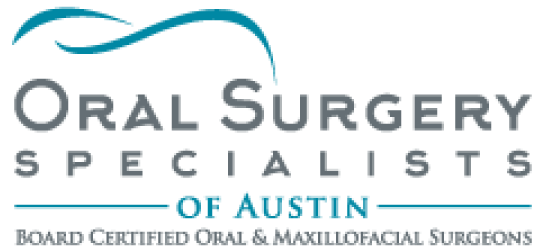IMPACTED CANINE
AUSTIN, TX
The canine teeth, sometimes known as eye teeth or cuspids, are the pointed teeth that are third over from center. A common dental disorder with the canine teeth is one or both of them being impacted. This means that they are unable to erupt fully from the gums. An impacted tooth can be problematic and a source for infection to brew.
At Oral Surgery Specialists of Austin, our team can review the positioning and status of your canine teeth and make recommendations specific to your needs.

IMPACTED TEETH
A tooth is considered impacted when it fails to fully extend above the gums. A tooth can be partially impacted, meaning some portion of it has broken the gum tissue but it’s not fully released from the tissue, or fully impacted meaning the tooth is completely hidden by gum tissue. Having impacted canines is a common dental disorder, they are the second most likely impacted teeth following the wisdom teeth. It often results from lack of space in the jaw combined with their extended development period into their full occlusion.
It’s important to seek treatment for your impacted canines in order to prevent a number of issues including:
- Development of Cysts: A cyst is a fluid filled sac that can lead to infection.
- Development of Infection in the Jaw: The development of cysts and infection can result in infection in the jaw.
- Disruption of Nearby Teeth: Impacted teeth, especially if the canines are turned or twisted, can interrupt neighboring teeth from placement.
- Decay of the Tooth: An impacted tooth is at higher risk of developing decay. Bacteria can easily slip between the gum tissue and tooth and remain hidden in areas that toothbrushes can not reach.
If you have an impacted canine, you do not necessarily require surgery. Generally, surgery is required if the tooth is disruptive or if the patient would like the balance. But, surgery may not be required if the impacted tooth is in a position that it will not damage the adjacent teeth, and it’s not causing concerning symptoms. We will check the status of the tooth during your regular dental exams.
SURGICALLY UNCOVER BURIED CANINES
Following examination of your tooth, you will be presented some surgical options. You can choose to have the tooth removed altogether, choose to have it uncovered and then an orthodontic device placed, or choose to have the tooth transplanted.
Canine Removed
We can surgically remove the tooth if it is not in a position to be uncovered or transplanted. Removing it can be the healthier long term option.
Uncovered Prior to Orthodontics
If the canine is in a reasonable position, we can surgically cut away the gum tissue and attach a bracket to the tooth to work with your braces. Sometimes, a neighboring tooth may need to be removed to make room, this will be discussed during your examination if this is a possibility.
Transplantation of the Canine
If exposure and orthodontics is not an option, but there is room available, we may be able to transplant the canine to a different root and then splint the tooth in place. We can discuss this more during your evaluation.
To learn more, give us a call at (512) 351-7653, or use our secure online appointment request form to get started with your consultation.
More Dental Services
3D Imaging
Facial Trauma Surgery
Oral Cancer Surgery
Single Tooth Dental Implants
Anesthesia
Full Arch Replacement with Dental Implants
Oral Pathology
Sleep Apnea Treatment
Bone Graft
Impacted Canine
Implant Anchored Dentures
Pre-Prosthetic Surgery
TMJ Treatment
Cleft Lip and Palate
Impacted Wisdom Teeth
Jaw Surgery
Ridge Augmentation
Tooth Extraction

